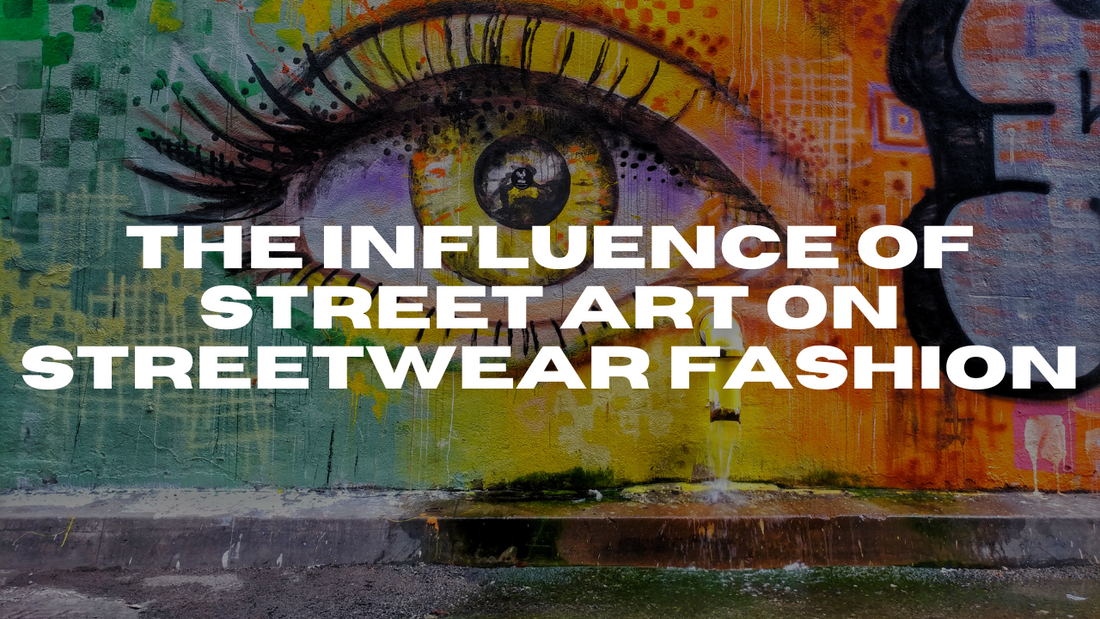
The influence of street art on streetwear fashion
Share
Street art and streetwear fashion have long been interconnected, with street artists often influencing the styles and designs of streetwear brands. From graffiti-inspired graphics to bold, colorful prints, street art has played a significant role in shaping the aesthetic of streetwear fashion. Here's a closer look at the influence of street art on streetwear fashion:
Graffiti-Inspired Graphics
One of the most obvious ways that street art has influenced streetwear fashion is through graffiti-inspired graphics. Many streetwear brands have incorporated graffiti-style lettering and designs into their collections, drawing inspiration from the bold, colorful, and often rebellious aesthetic of graffiti art. Brands like Supreme, Stussy, and BAPE have all used graffiti-inspired graphics in their collections, and these designs have become a key part of the streetwear aesthetic.
Collaborations with Street Artists
Another way that street art has influenced streetwear fashion is through collaborations with street artists. Many streetwear brands have teamed up with well-known street artists to create limited-edition collections or one-off pieces. These collaborations have helped to bring street art to a wider audience and have helped to establish street artists as legitimate and respected members of the fashion world.
Use of Street Art in Advertising and Marketing
Street art has also played a role in the advertising and marketing of streetwear brands. Many brands have used street art-inspired graphics and imagery in their marketing campaigns, often incorporating photographs of street art or graffiti into their advertisements and promotional materials. This has helped to link streetwear brands with the rebellious and edgy aesthetic of street art, and has helped to appeal to a younger, more alternative audience.
Street Art-Inspired Product Designs
In addition to using graffiti-inspired graphics and collaborating with street artists, many streetwear brands have also taken inspiration from street art in their product designs. This can include incorporating elements of street art into the overall design of a product, such as using spray paint-style detailing or incorporating street art motifs into prints or patterns. Brands like Nike, adidas, and Converse have all used street art-inspired designs in their collections, and these designs have become a key part of the streetwear aesthetic.
Street Art as a Cultural Touchstone
Street art has also served as a cultural touchstone for the streetwear industry, providing a shared reference point and a way for people to connect with each other and with the culture of streetwear. Street art has a long and storied history, and it has been a key part of the urban landscape for decades. As such, it has come to represent many of the values and ideals associated with streetwear culture, including creativity, self-expression, and a rebellious spirit.
Street Art as a Source of Inspiration
Finally, street art has served as a source of inspiration for many streetwear designers and brands. From the bold, colorful graphics of graffiti art to the more subtle, thought-provoking messages of street art, designers have been able to draw on the rich visual language of street art to create unique and original designs for their collections.
Overall, it's clear that street art has played a significant role in shaping the aesthetic of streetwear fashion. From graffiti-inspired graphics to collaborations with street artists to the use of street art in advertising and marketing, street art has helped to define the look and feel of the streetwear industry. As the influence of street art continues to evolve, it will be interesting to see how it shapes the future of streetwear fashion.
Graffiti-Inspired Graphics
One of the most obvious ways that street art has influenced streetwear fashion is through graffiti-inspired graphics. Many streetwear brands have incorporated graffiti-style lettering and designs into their collections, drawing inspiration from the bold, colorful, and often rebellious aesthetic of graffiti art. Brands like Supreme, Stussy, and BAPE have all used graffiti-inspired graphics in their collections, and these designs have become a key part of the streetwear aesthetic.
Collaborations with Street Artists
Another way that street art has influenced streetwear fashion is through collaborations with street artists. Many streetwear brands have teamed up with well-known street artists to create limited-edition collections or one-off pieces. These collaborations have helped to bring street art to a wider audience and have helped to establish street artists as legitimate and respected members of the fashion world.
Use of Street Art in Advertising and Marketing
Street art has also played a role in the advertising and marketing of streetwear brands. Many brands have used street art-inspired graphics and imagery in their marketing campaigns, often incorporating photographs of street art or graffiti into their advertisements and promotional materials. This has helped to link streetwear brands with the rebellious and edgy aesthetic of street art, and has helped to appeal to a younger, more alternative audience.
Street Art-Inspired Product Designs
In addition to using graffiti-inspired graphics and collaborating with street artists, many streetwear brands have also taken inspiration from street art in their product designs. This can include incorporating elements of street art into the overall design of a product, such as using spray paint-style detailing or incorporating street art motifs into prints or patterns. Brands like Nike, adidas, and Converse have all used street art-inspired designs in their collections, and these designs have become a key part of the streetwear aesthetic.
Street Art as a Cultural Touchstone
Street art has also served as a cultural touchstone for the streetwear industry, providing a shared reference point and a way for people to connect with each other and with the culture of streetwear. Street art has a long and storied history, and it has been a key part of the urban landscape for decades. As such, it has come to represent many of the values and ideals associated with streetwear culture, including creativity, self-expression, and a rebellious spirit.
Street Art as a Source of Inspiration
Finally, street art has served as a source of inspiration for many streetwear designers and brands. From the bold, colorful graphics of graffiti art to the more subtle, thought-provoking messages of street art, designers have been able to draw on the rich visual language of street art to create unique and original designs for their collections.
Overall, it's clear that street art has played a significant role in shaping the aesthetic of streetwear fashion. From graffiti-inspired graphics to collaborations with street artists to the use of street art in advertising and marketing, street art has helped to define the look and feel of the streetwear industry. As the influence of street art continues to evolve, it will be interesting to see how it shapes the future of streetwear fashion.
